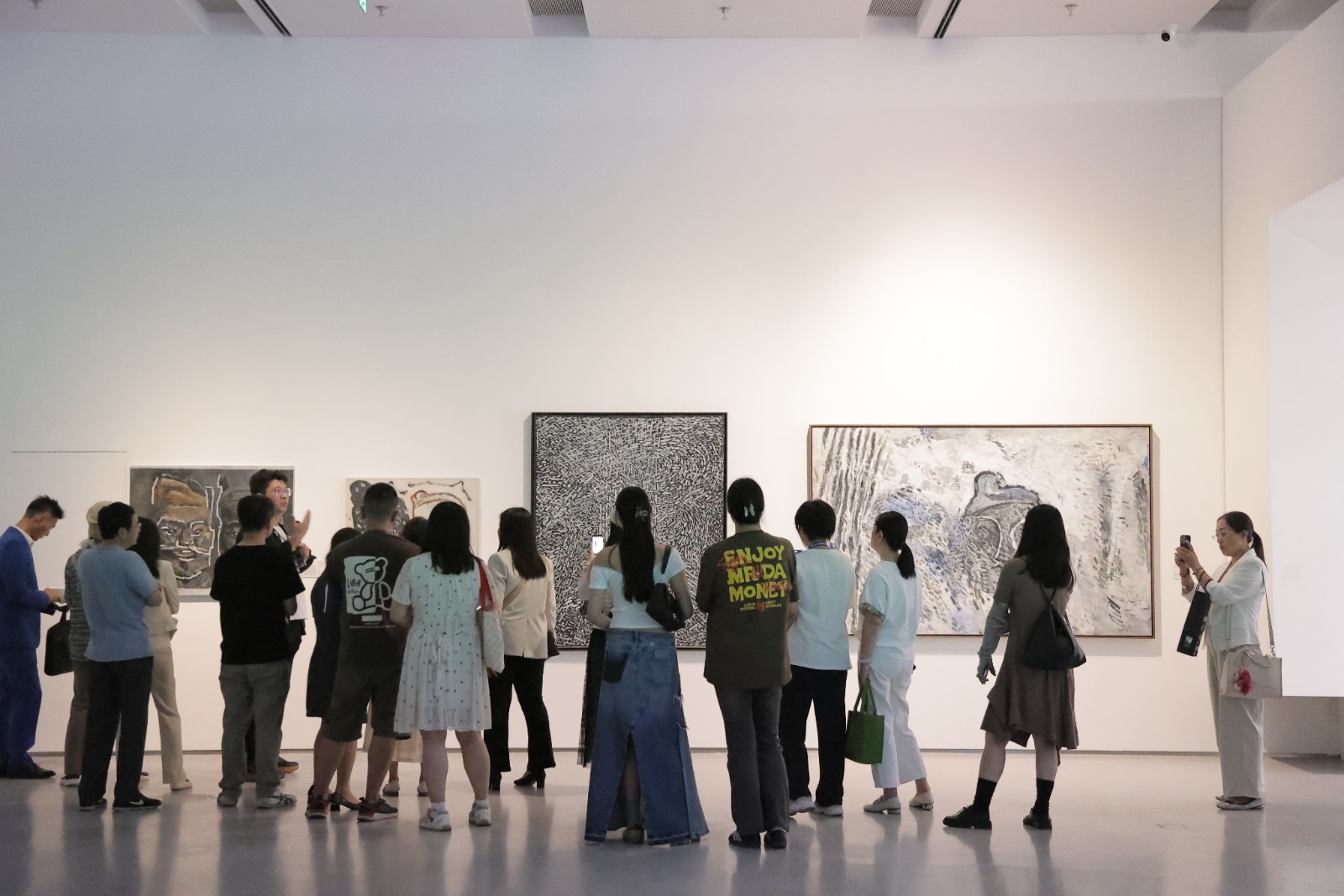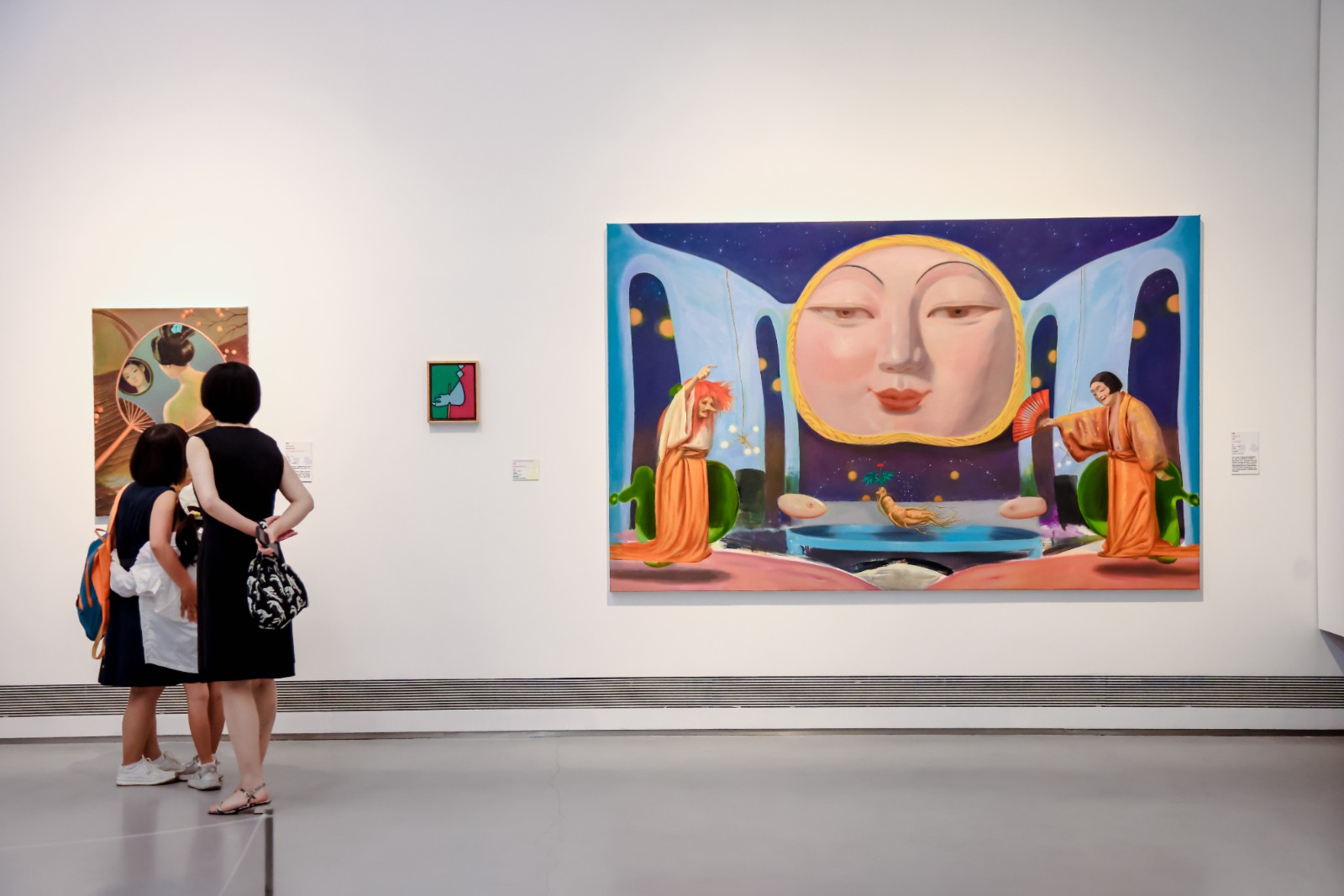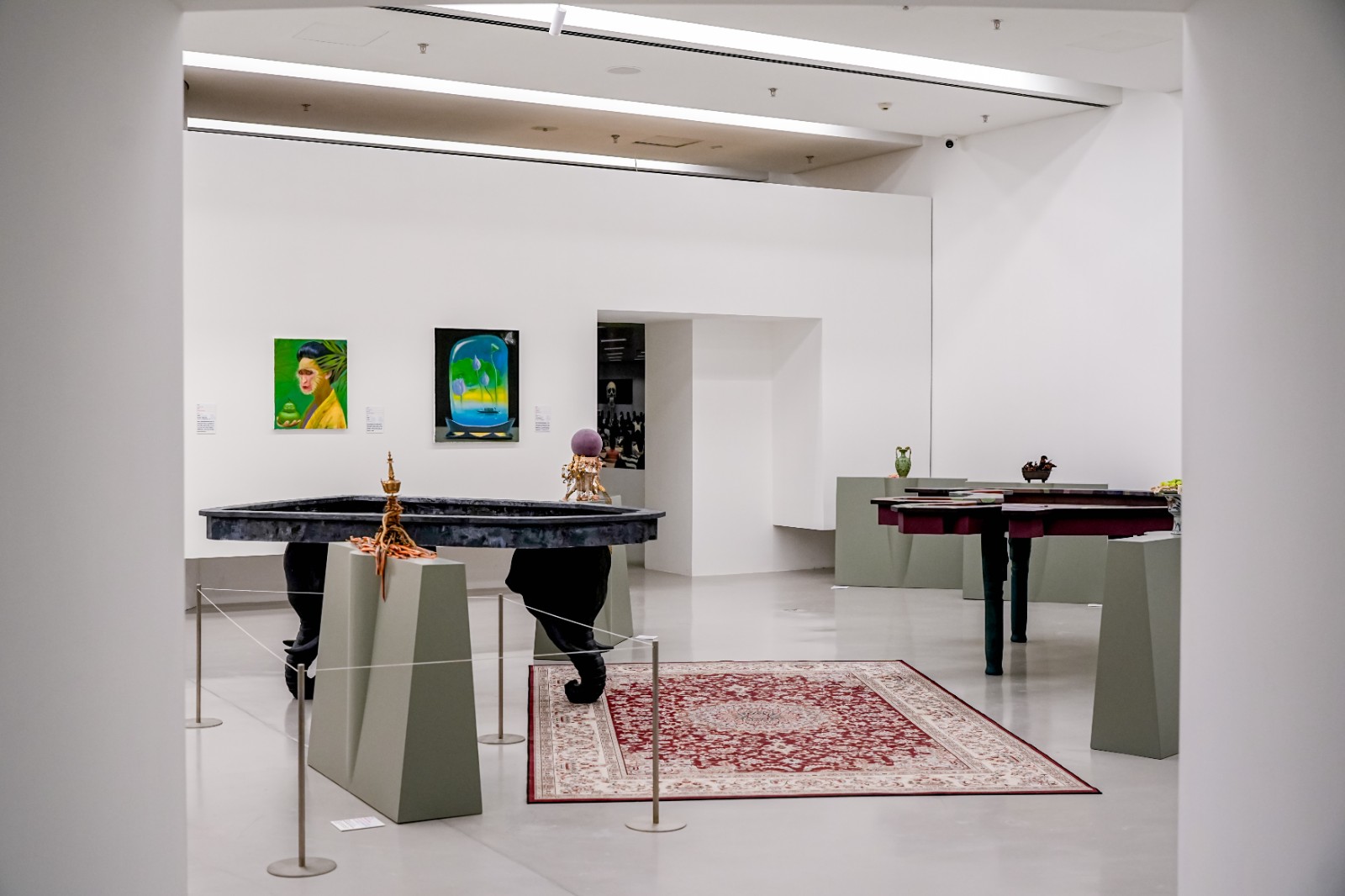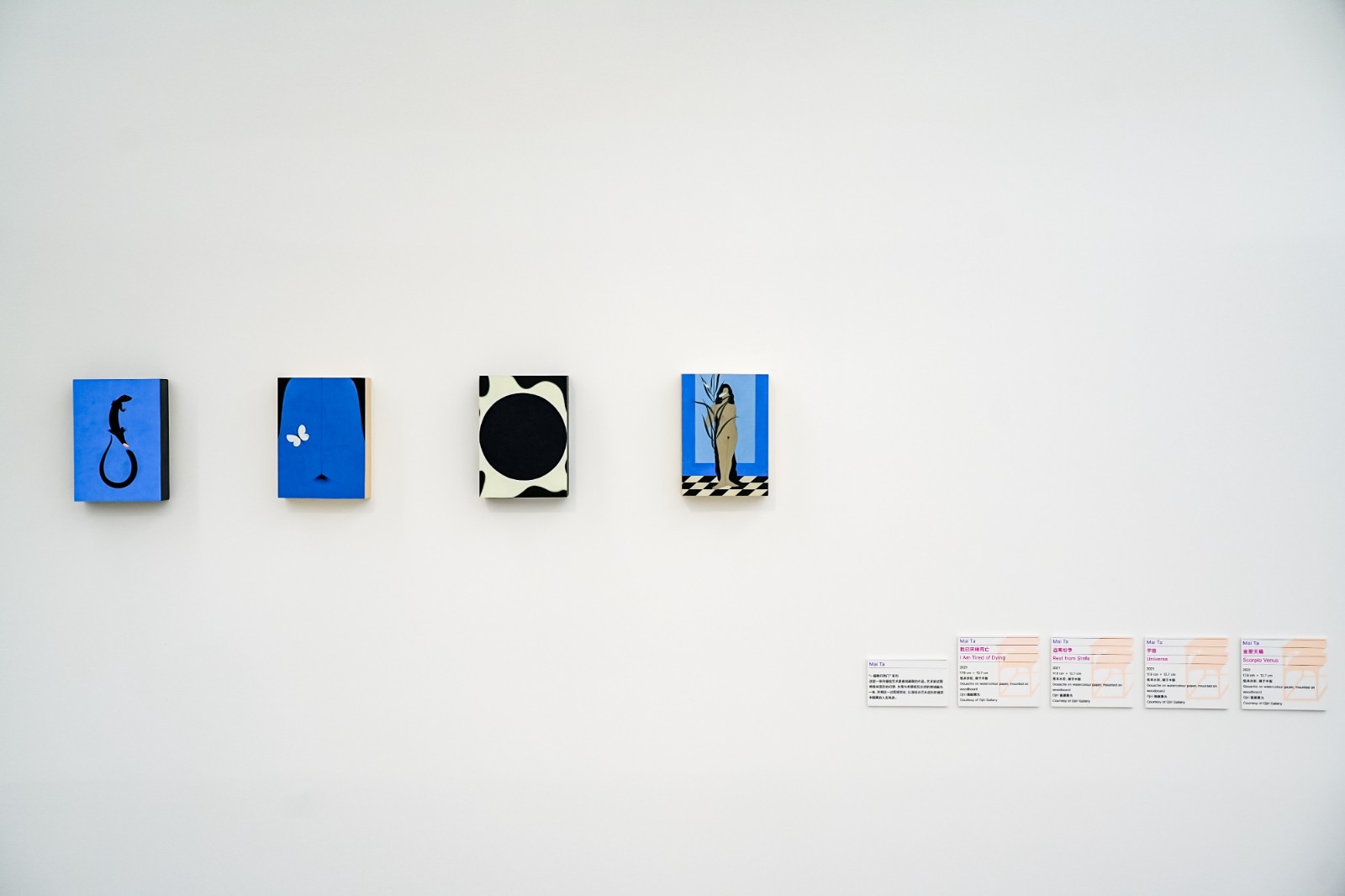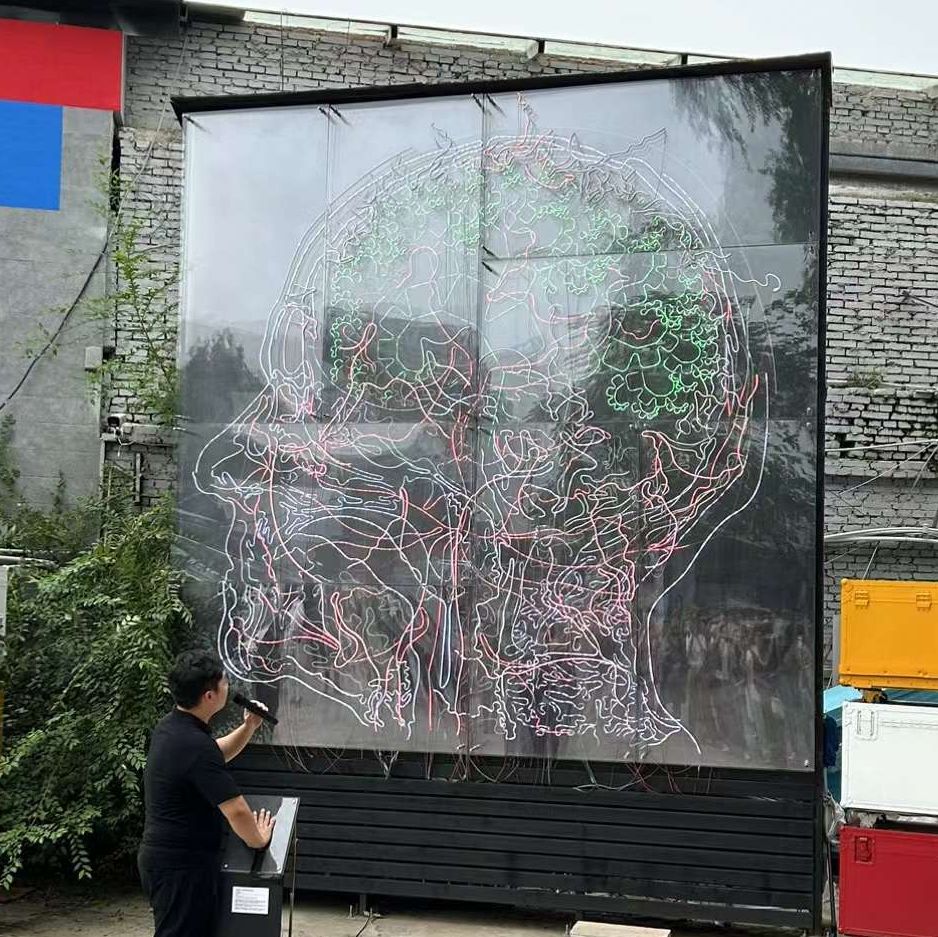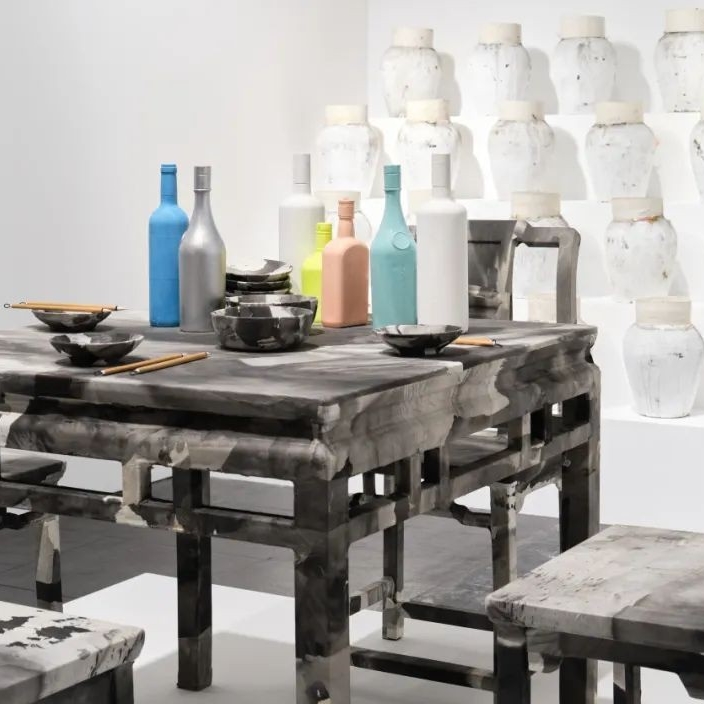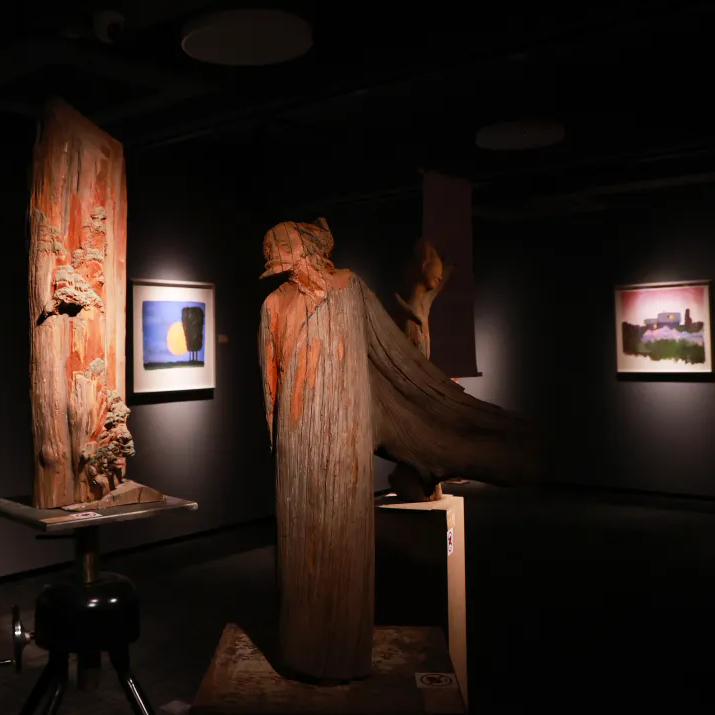There are five pieces of scroll Shi Yi Shi Er (One or Two) handed down from the Qing Dynasty which follow the arrangement of Two Selves reported as a Song Dynasty painting: a man sitting on a bed forms a mirror image with his portrait, while a lad is serving him. Both of them are surrounded by rare treasures. And the leading role is Emperor Qianlong himself. Emperor Qianlong wrote an inscription on the painting: “Shi Yi Shi Er (One or Two); Neither Sameness nor Difference”. One or Two? False or True? Curator Yang Zi seemed to have found his answer to it in the group exhibition “Two Sides of One Coin: Reflections and Transformations” recently held at Taikang Art Museum, Beijing.

Ding Guanpeng (Qing Dynasty), Shi Yi Shi Er (One or Two),Ink and color on scroll
Being an exhibition featuring few collection from Taikang Foundation, “Two Sides of One Coin” includes the works of fifteen artists, casting light on the contemporary art ecology from a global perspective. Focusing on problems such as alienation among people and lack of meaning brought about by the rapid development of modernity, it presents the departure and return of artists from different regions based on this origin. The metaphorical principle of recursion in Shi Yi Shi Er (One or Two) was followed by the curator when making and selecting exhibits. Some series of works were broken down, resembled, and repeatedly displayed in different galleries, which encourages visitors to look for connections from one origin to another, thereby visualizing the concept of recursion, guiding the audience to feel the activation of the cycle, and experience the recursion from the natural world to the spiritual world.

Curator Yang Zi shared with CAFA ART INFO the reason that the exhibition centered around Shi Yi Shi Er (One or Two) as he believed that “Shi Yi Shi Er (One or Two); Neither Sameness nor Difference” symbolizes the recursive questioning of art towards itself, and “Confucianism or Mohist School” points to the political proposition of tolerance and coexistence among civilizations.
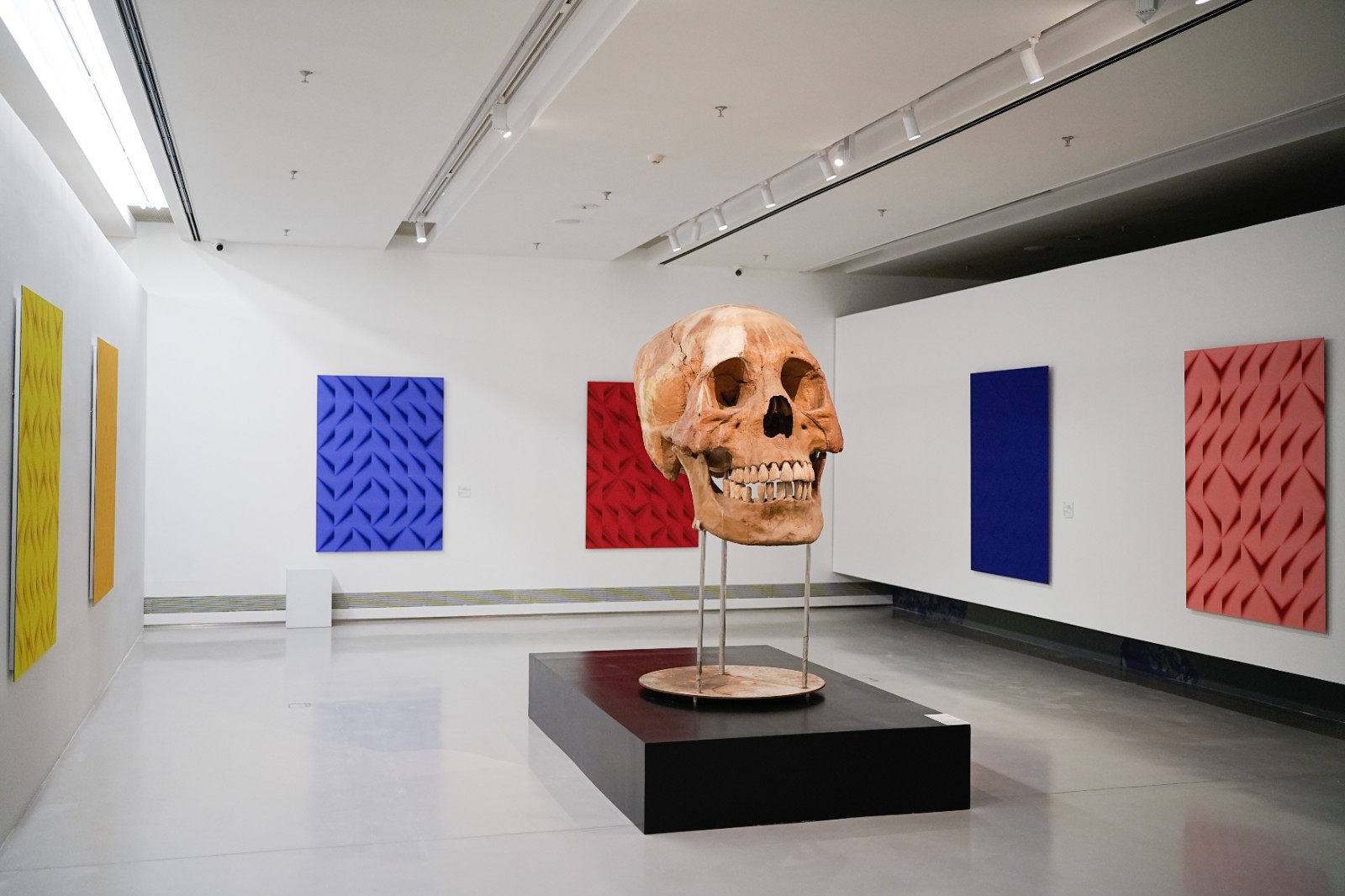
The so-called “recursion” refers to the method of solving problems by repeatedly decomposing them into similar sub-problems. In other words, each recursion is a loop, like the familiar nursery rhyme: “Once upon a time, there was a mountain; in the mountain, there was a temple; in the temple, there was an old monk and a little monk. The old monk told a story to the little monk: once upon a time, there was a mountain; in the mountain, there was a temple…”
However, in this narrative loop, the tone, emotion, and psychology of the narrator, the state of the listener, and the time and space involved all have changed. Although the endpoint returns to the origin, this origin is “new” and different from the previous one, or the primary one. Nonexistence and existence, yin and yang, being or not being, whether aggregated or excluded, always return to the holistic self, creating a continuous opposition. This process of illusion is also a recursive process of the reformation of a mirror image.
In the Mirror: The Reconstruction of the Ego
In this exhibition, 15 artists have interpreted “recursion” through multiple media. For I GAK Murniasih from Bali, Indonesia, recursive questioning starts from the ego. She conveys the self-portrait in her consciousness with rough and vital lines, abstractly fusing the human body with animals, plants and other forms. She confronts the origin of desire, and depicts a free female body full of vitality.
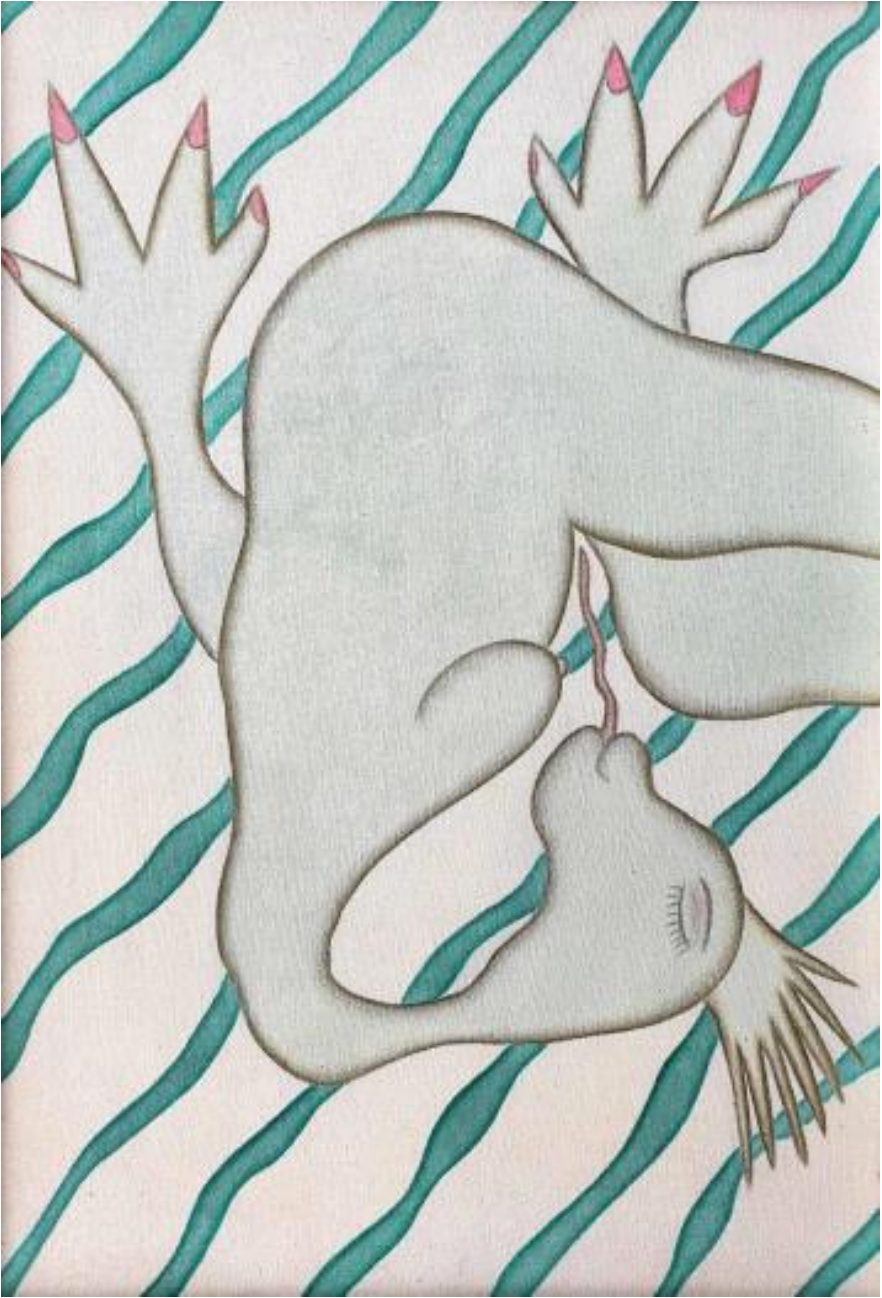
I GAK Murniasih, Hati yang Sepi Ⅰ, 1995, 50x35cm, Acrylic on Canvas
Mia Ta, an artist from Vietnam also freely expresses and commemorates her emotions through paintings. “Amygdala” is a human tissue in the brain related to emotion and memory. In the series named after it, Mia Ta recorded her personal experience and tried to preserve time.
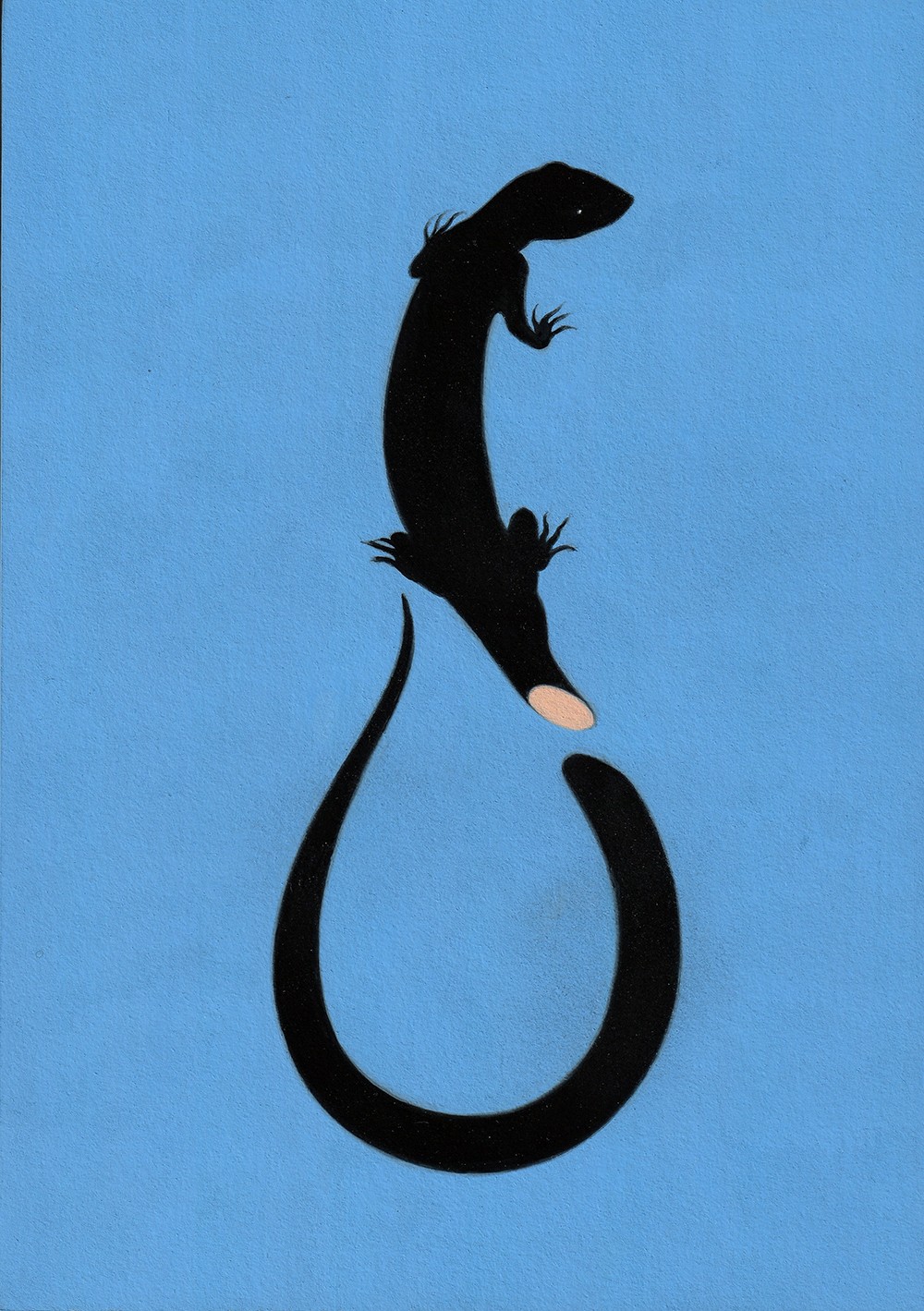
Mai Ta, I Am Tired of Dying, 2021, 12.7 cm × 17.9 cm, Gouache on watercolour paper, mounted on woodboard
Chinese artist Zhang Lian regards himself as a part that is neither friendly nor aloof from the collective and nature, while at the same time blending with different historical backgrounds. Her works are all-encompassing. Characters from various times, places and cultural backgrounds are well arranged in her writings.
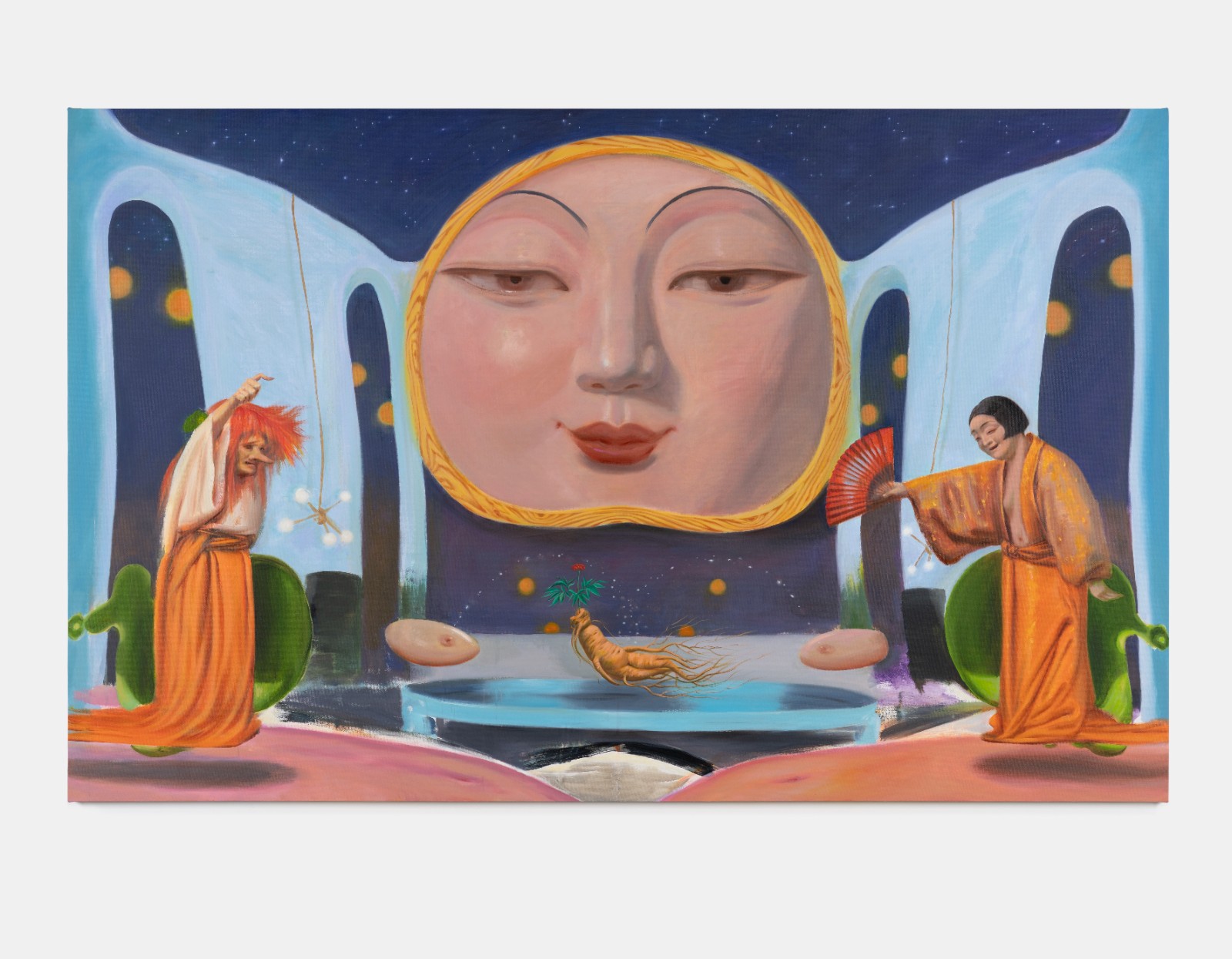 Zhang Lian, The Temple, 2022, oil on canvas, 170 x 270cm
Zhang Lian, The Temple, 2022, oil on canvas, 170 x 270cm
Wang Xu, an artist also from China, used a large skull model to restore the memories of his college days. While looking at it, the audience might feel as if they were sitting in the first row of the sculpture classroom sixteen years ago. With his superb memory, he creates a “real and great” visual experience between photos and objects, planes and three-dimensional space.

Wang Xu, Big Skull in Classroom F109 Full of First-graders, 2008, Dimensions variable, Resin, metal, oil paint
Observing: Looking at the World Through a Mirror
If it can be said that Wang Xu restores his personal memory, then Tong Yixin have photographed a memoir for his own sculptures. Through the switching of high and low perspectives in the three studios and the frequent changes in focal length, he emphasizes the mutually nurturing relationship between space and artwork. Human culture and nature have always maintained a dynamic and balanced connection, and sculptures are endowed with vitality in such an organic ecological environment.
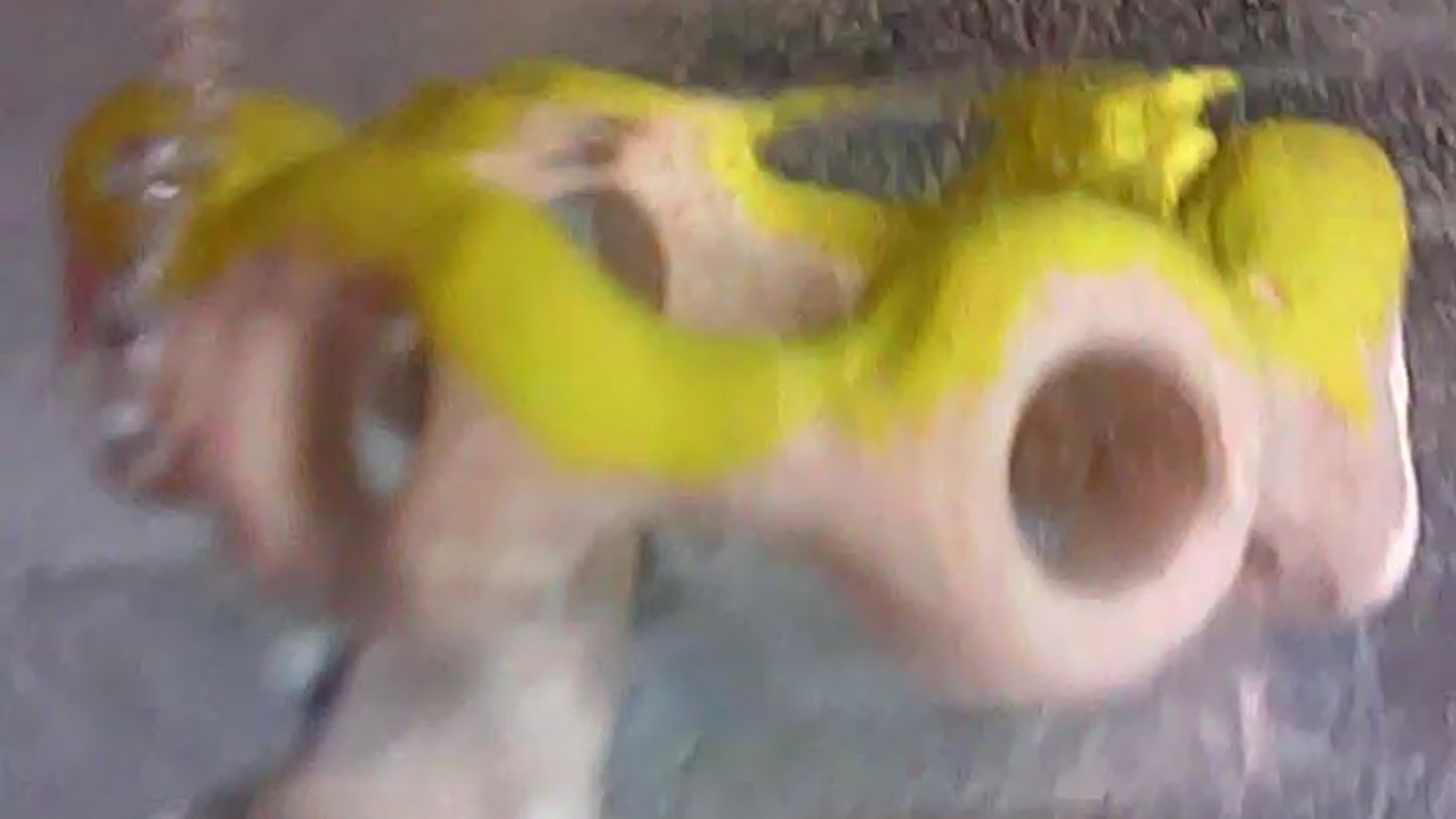
Tong Yixin, Formation of Petrified Seas, 2022, 12’18”, HD video with sound
The mirror is an important medium for artists to realize the reproduction of the real “I” and the construction of the ideal “ego.” For Lu Dadong, the mirror is also a carrier of the calligraphy cycle. As a metaphor for the similarity among the various “origins” of recursion, it shows the multiple relationships between the ego and the outside world through reflection and refraction. The writing process for him is a demonstration of the recursive process in artistic creation.
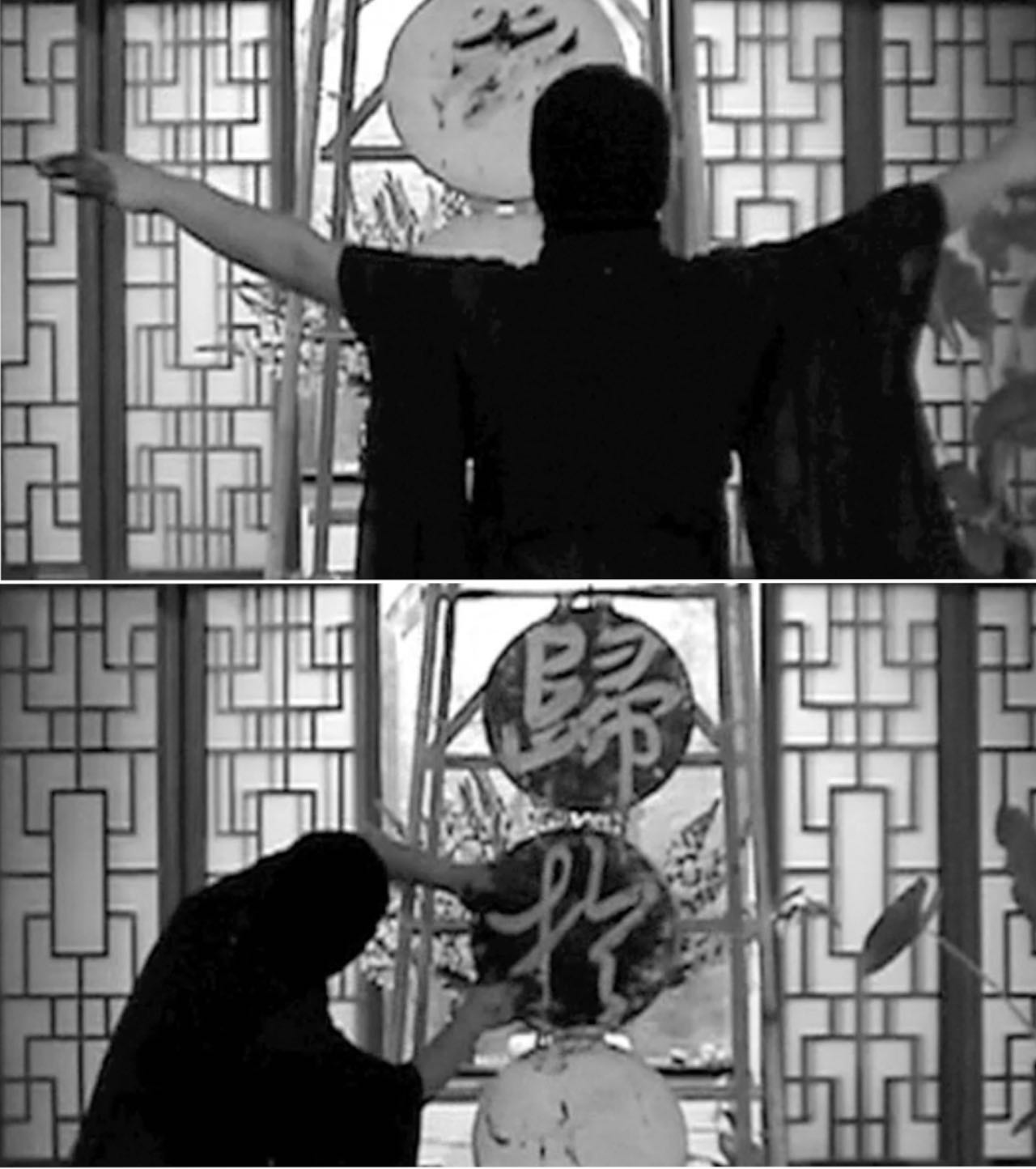
Lu Dadong, Live Calligraphy Performance, 2024
In life, others are your mirror. With surreal techniques, Lee Tzu-hsun builds a palace of love, exploring the aesthetics of contradictions, and he also uses dynamic balancing devices to show the subtle and uncertain psychological changes in love, presenting a recurring state of unity in opposites.
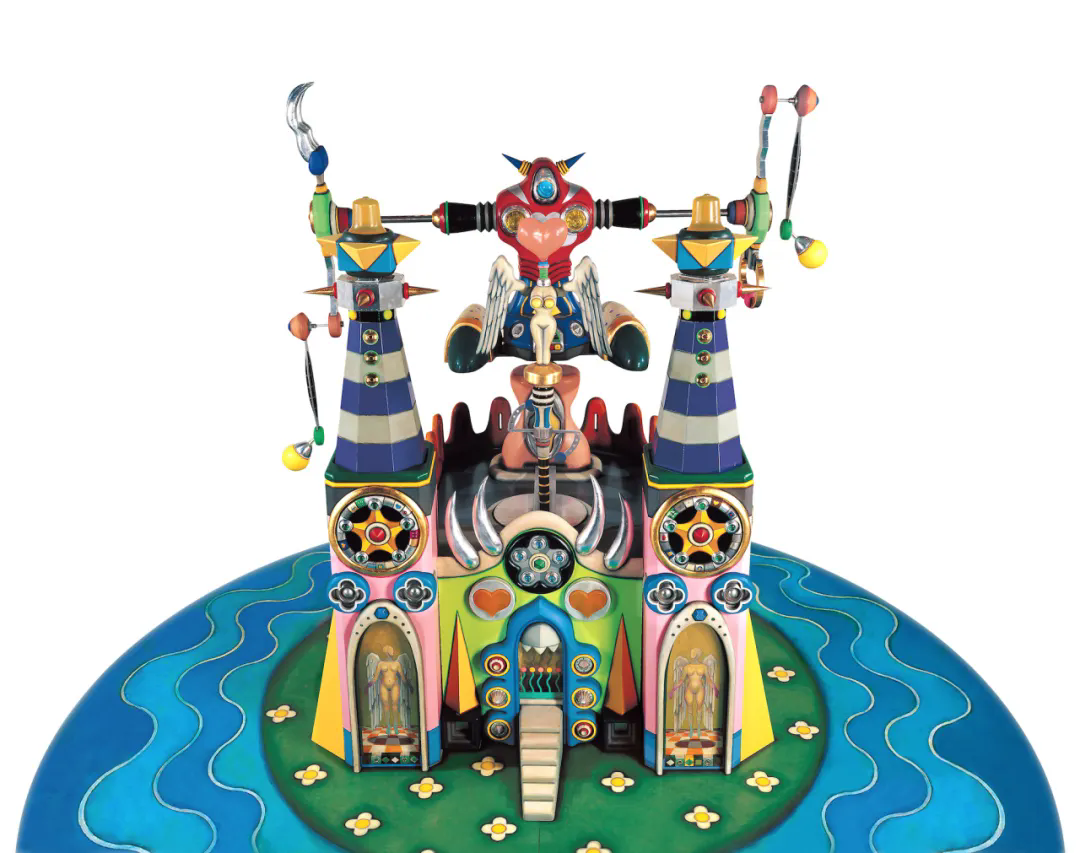 Lee Tzu-hsun, Love Temple, 1999, 360 cm × 360 cm × 185 cm, Acrylic paint, spray paint, wood, plastic, metal, lamp, motor, mechanical parts, goldfish
Lee Tzu-hsun, Love Temple, 1999, 360 cm × 360 cm × 185 cm, Acrylic paint, spray paint, wood, plastic, metal, lamp, motor, mechanical parts, goldfish
Jesper Just takes an objective look at human emotions by capturing the brain activity of an actor speaking aloud with MRI technology. He believes that emotions are a product of culture, as people learn social customs, express emotions appropriately when socializing, and they make emotions interpretable by others.
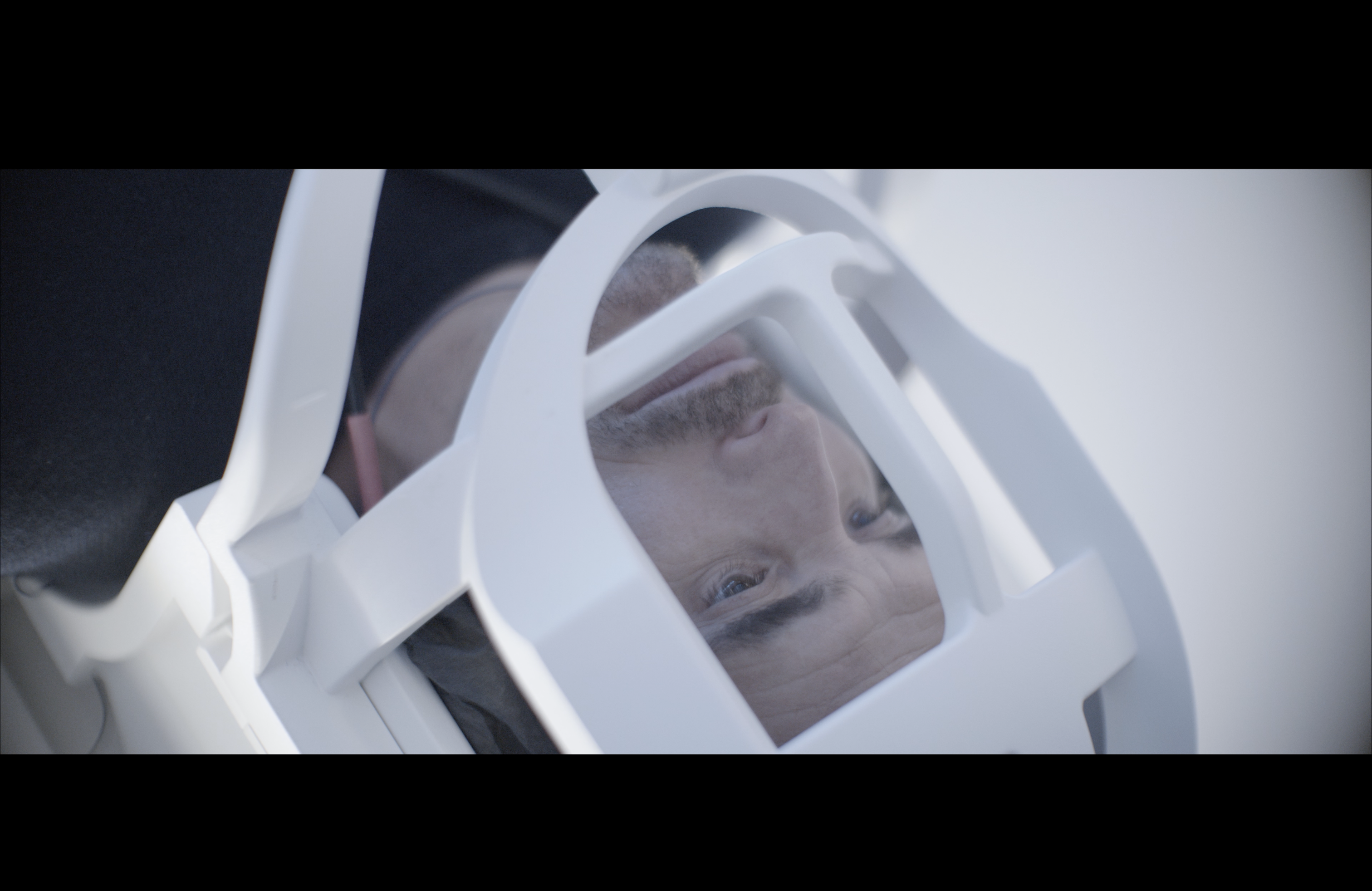
Jesper Just, Interfears, 2023, 16', Single-channel video
The advancements in science and technology are always inseparable from emotions, human society and culture, and Zhou Tao has also keenly captured this. In his documentary “The Axis of Big Data”, data centers are not his main subject. He unfolds video narratives from local people in the mountains and explores the relationship between individuals and space.
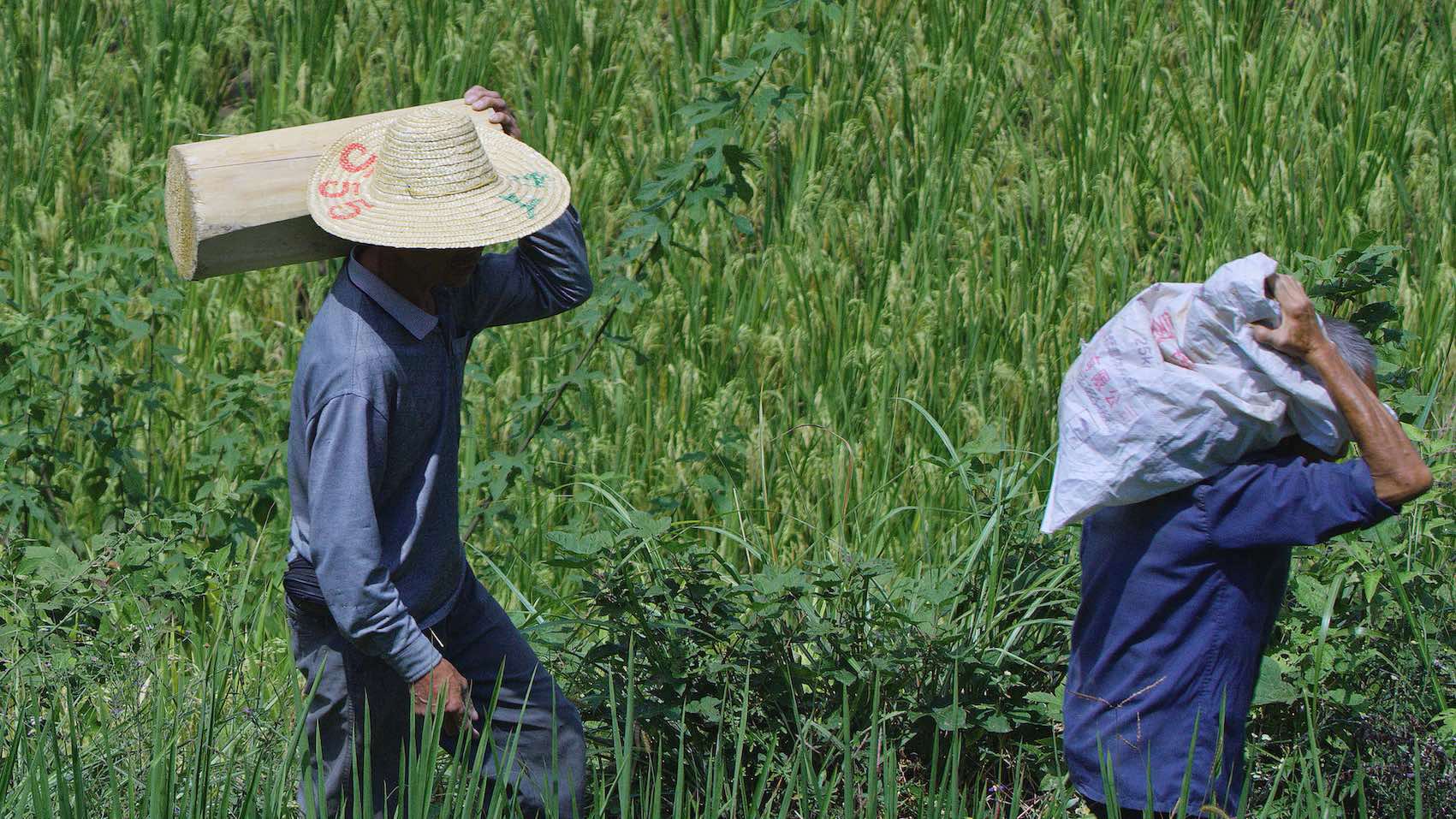
Zhou Tao, The Axis of Big Data, 2024, 57 '34'', Single-channel 4K HD video (16:9, color, with sound)
This work is produced by Topography Practice and Vitamin Creative Space, co-produced with M Art Foundation.
Tang Yongxiang focuses on the surrounding environment. He lays random images taken every day on the canvas, and then covers them with abstract lines and color blocks. The covering is an imitation of forgetfulness, while through repeated memories, new spaces and details are extended, making people re-understand the things painted.
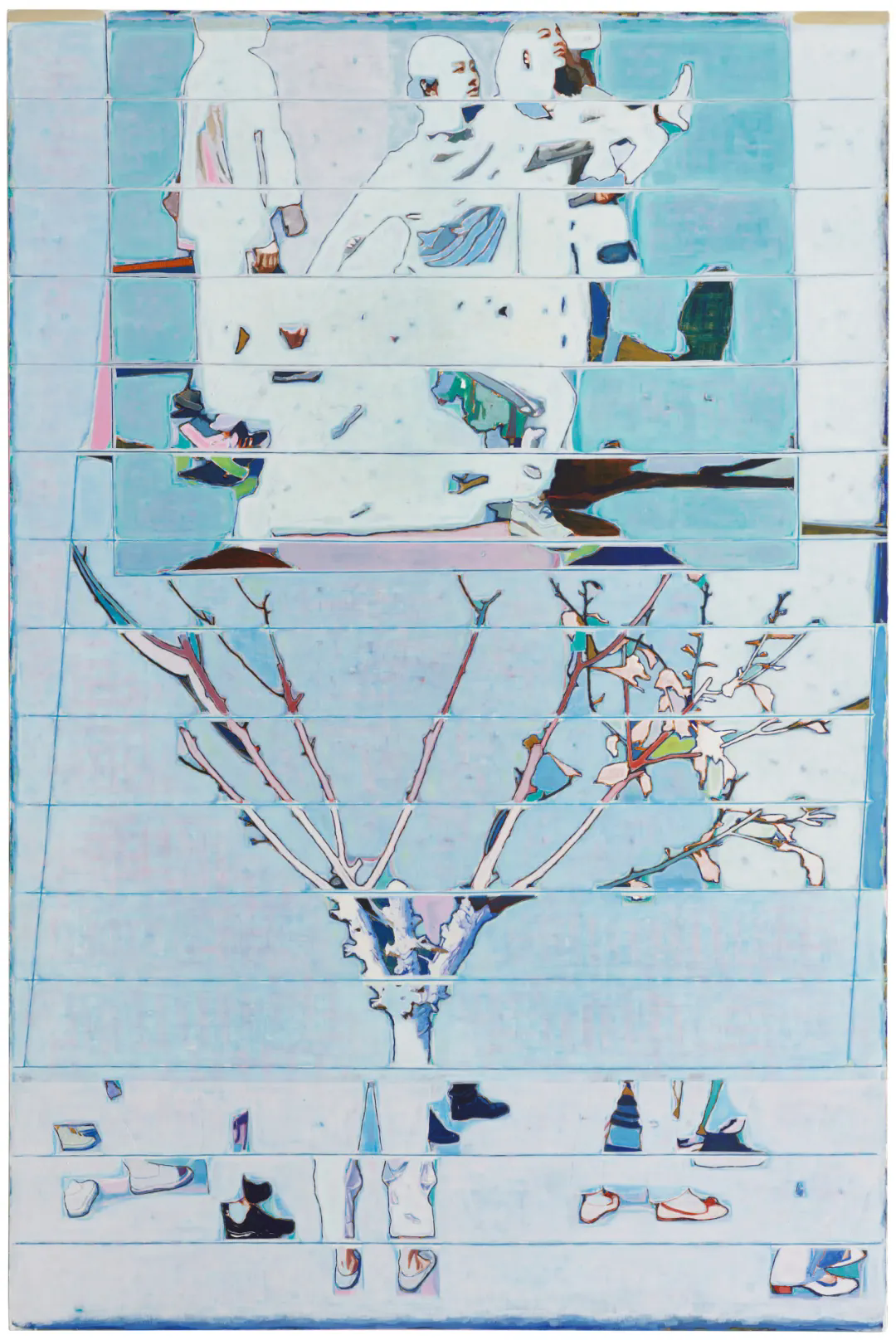 Tang Yongxiang, A Tree in the Middle with a Group of People on Top and Some Feet on the Bottom, 2024, 300 cm × 200 cm, Oil on canvas
Tang Yongxiang, A Tree in the Middle with a Group of People on Top and Some Feet on the Bottom, 2024, 300 cm × 200 cm, Oil on canvas
In Shi Qing’s “The Story of White Sugar”, sugar is used as the origin to describe and interpret the budding modernity of the late Ming Dynasty through moving images. In the debate between consumerism and operatic Confucianism, individual value and meaning gradually emerge. This recursive exploration enables people to re-understand themselves in modernity and explore the relationship between the ego and society through new mirror images and self-reflection.
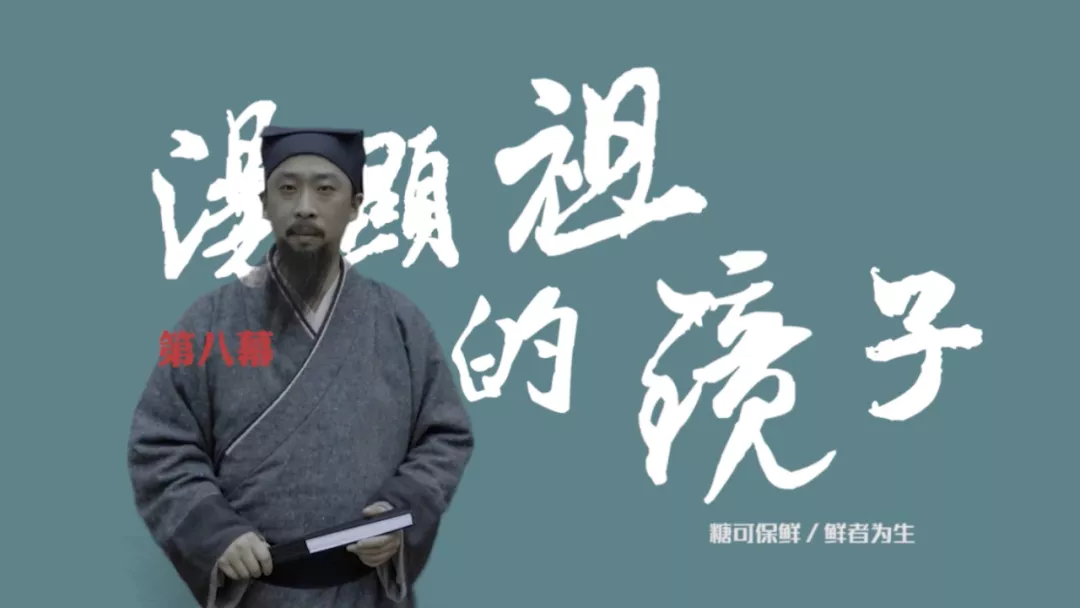 Shi Qing, The Story of White Sugar, 2020, Single-channel video, screenshot
Shi Qing, The Story of White Sugar, 2020, Single-channel video, screenshot
The Broken Mirror: Reunited Through Repetition
Recursive forms also appear in interesting ways. Tang Han’s video “∞ Container” is intended to translate heavy stones into light and evacuated materials. She edits the collection process of stone boxing into a seamless loop scene, and evacuates the image of the stone to make it a carrier of negative border for the script. This treatment does not only endow the stone with a new meaning, but it also achieves visual recursion through looping.
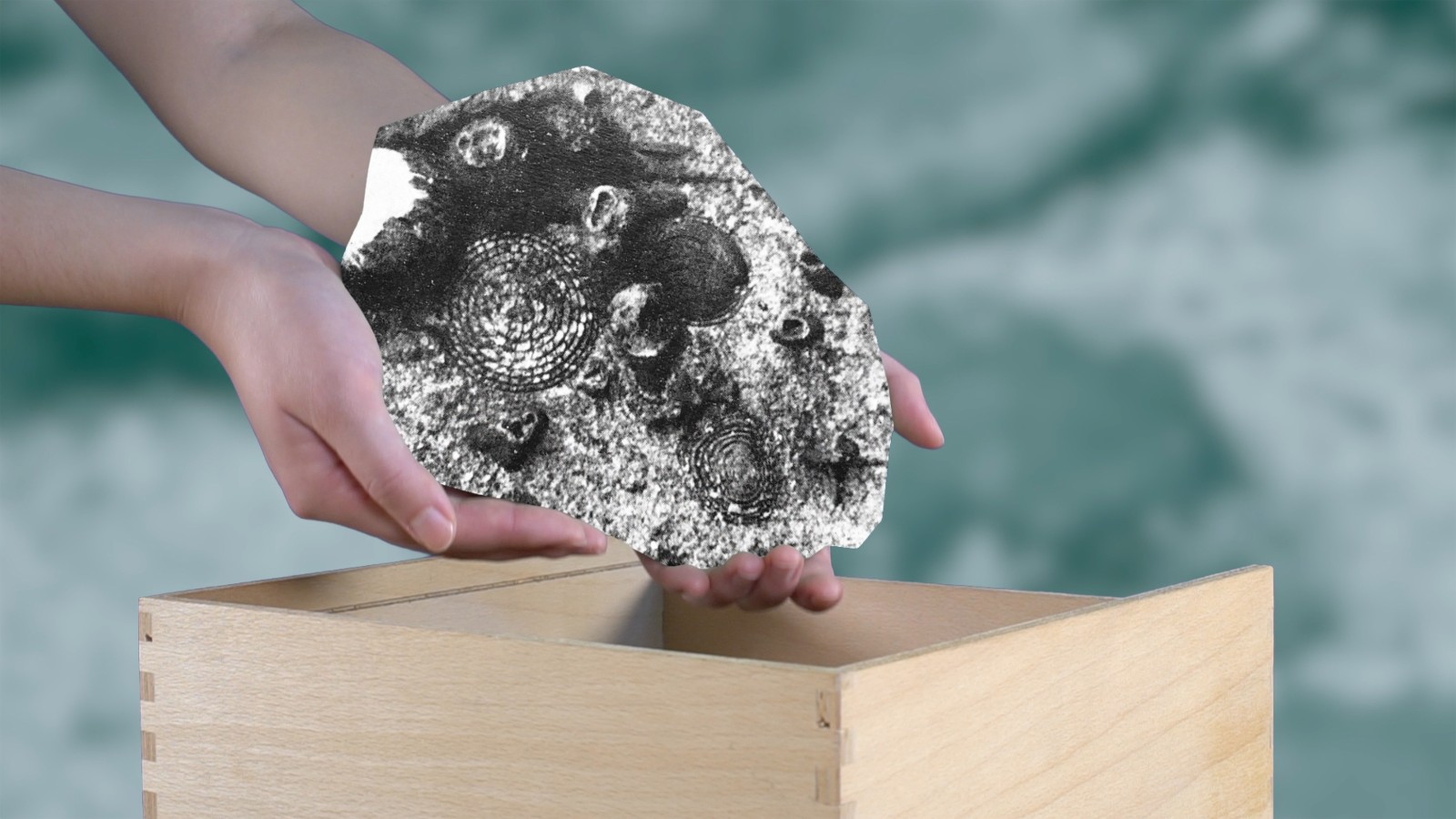
Tang Han, ∞ Container, 2021, 7'50'', Single-channel video, color, sound, loop
Yu Youhan’s works combine Eastern aesthetic symbols and Western modern expressive methods. He carefully arranges points, lines and surfaces to guide the viewer’s eyes to wander around the image. He uses the floating and looping of points and lines to symbolize the interweaving of the material and spiritual worlds. It features Yu Youhan’s comprehension of the spontaneous and free movements in the universe: there is stillness within movements, and there are movements within stillness.
 Yu Youhan, Abstraction1988-1, 1988, Acrylic on canvas,160.6x132cm
Yu Youhan, Abstraction1988-1, 1988, Acrylic on canvas,160.6x132cm
Being an artist with a background in the financial industry, Payne Zhu has a completely different approach to present the concept of recursion. In the work “Potlatch of Derivatives”, he applies the juxtaposition of partially edible simulated dishes, sluice bases and dark tables in the shape of lakes and cicadas which have both dining and gambling functions. In Payne’s eyes, the capitalist world is a “derivative” world, with illusory speculative promises for the future supporting a financial system that is on the verge of collapse. The simulated food altar may be the artist’s satire on some of the shoddy and flashy chaos in the art market, which questions the myth of“forever growth.”

Payne Zhu, Emerald-Decorated Feathery Cloth (snake-gourd with Sea Grapes)
Wooden Sluice: 100 cm × 30 cm × 84 cm,
Wrinkled dish, celadon-glazed Dehua white porcelain Buddha statue of Ming Dynasty (replica), cucumber, sea grape
Zhan Rui also tries to become a “disruptor” and allow art to enter the broader natural world. He pays attention to the personalized and limited small data and uses various means to translate it, expanding the boundaries of art in the process. In his work “Weather and Colored Paper” series, he used paper folding to record the weather and reduce the big to the small. This reveals the mystery of transcendent things that confuse people’s hearts, band it also raises questions about the individual spirit of modernity. In essence, it still echoes the concept of recursion.
 Zhan Rui, Weather–162.24g Ultramarine, 2021,169 cm × 120 cm, Archival inkjet print mounted on aluminum composite panel
Zhan Rui, Weather–162.24g Ultramarine, 2021,169 cm × 120 cm, Archival inkjet print mounted on aluminum composite panel
The principle of recursion was followed when making and selecting exhibits. In such a field, the recursive experience is continuously strengthened. During the tour guide training, the curator emphasized the need to leave an open space for the audience and eliminate the barrier between the audience and the works. The exhibition therefore hopes that viewers with different backgrounds can see themselves and others in the mirror, and ultimately have the strength to break the mirror.
Text (CN) by Jinzhi, edited (EN) by Sue/CAFA ART INFO
Image Courtesy of Taikang Art Museum
About the Exhibition
 Dates: June 16, 2024 to July 31, 2024
Dates: June 16, 2024 to July 31, 2024
Curator: Yang Zi
Exhibition Coordinator: Ruan Jingjing
Artists: I Gusti Ayu Kadek Murniasih, Jesper Just, Lee Tzu-hsun, Lu Dadong, Mai Ta, Payne Zhu, Shi Qing, Tang Han, Tang Yongxiang, Tong Yi Xin, Wang Xu, Yu Youhan, Zhang Lian, Zhou Tao, Zhan Rui
Venue: Taikang Art Museum
Address: 1F and 2F of Taikang Group Building, Building 1, Yard 16, Jinghui Street, Chaoyang District, Beijing


